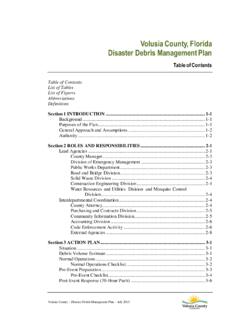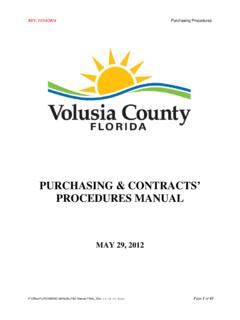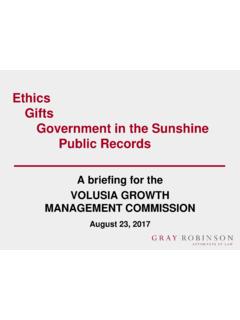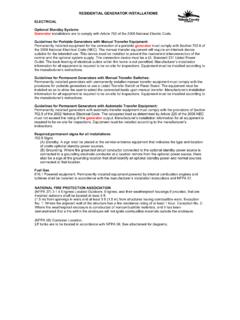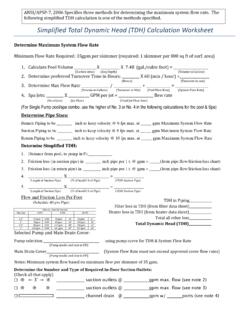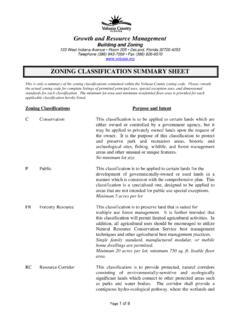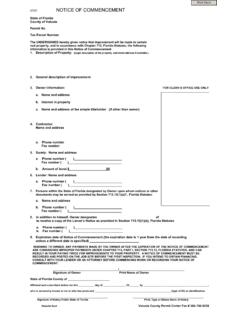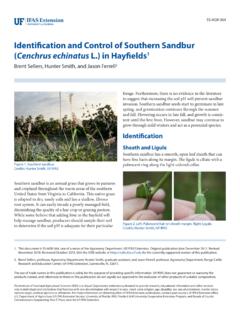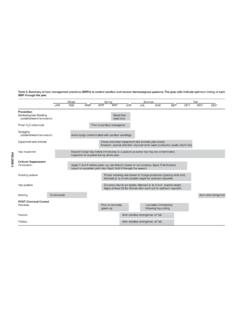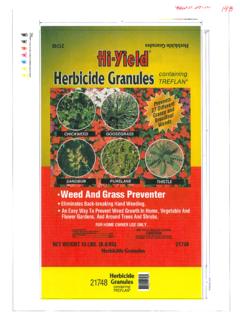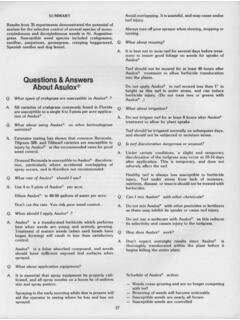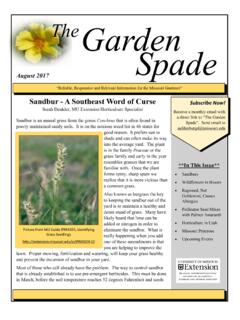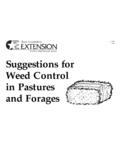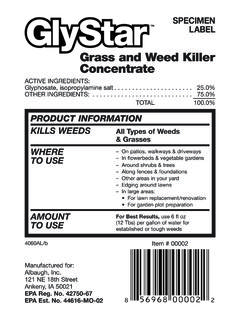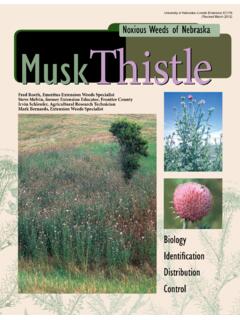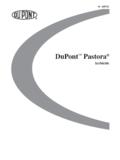Transcription of Backyard Gardener - Volusia County Government …
1 Backyard Gardener M A R C H 2 0 1 4 V O L U S I S A C O U N T Y E X T EN S I O N I N T H I S I S S U E Controlling Sand Page 1 The Page 4 Pollination and Page 5 Newly Sprouted Page 6 Need It? Find It!.. Page 7 Family Page 8 Queen Page 9 Can You Name Page 9 March/April Calen-dar of Public Page 10 Controlling Sandspurs in Central Florida Lawns NOW IS THE TIME!! Joe Sewards Urban Horticulture Agent and Master Gardener Coordinator Scientific Name: Cenchrus echinatus L. Family: Gramineae (Poaceae), Grass Family I am trying to protect you! From what, you might ask? From sandspurs, I say! But, you don t have a problem with sand-spurs now; you have a problem with them later in the summer. Yes, I know but, in order to effectively control sandspurs you need to understand its biology. Let s clar-ify some terms that we will use to under-stand sandspurs and their control. Sandspur is an annual weed.
2 That means that it germinates, grows to maturity and produces seeds in one growing season. The parent plant will die leaving behind seeds that will lie dormant until the next growing season. Annual weeds like that can be controlled with pre-emergent herbicides. Pre-emergent herbicides, when applied ac-cording to label directions effectively con-trol annual weeds but, timing is abso-lutely critical and, it depends on the weed. Sandspur germinates in the spring so; applying a pre-emergent herbicide now should significantly reduce the num-ber of sandspur plants that you will have to deal with in the summer/fall. Sandspur is also a monocot, just like lawn grass. Being a monocot, it is difficult to control selectively in the lawn once the plant has germinated. There are a few post-emergent herbicides that will con-trol sandspur but, they can be expensive and, if not applied strictly in accordance with the label directions, they can damage turf.
3 Remember, a post-emergent herbi-cide is one that kills plants that are ac-tively growing. A selective herbicide is one that will kill a certain kind of plant and not others. Most turf herbicides are selective for di-cots. Dollarweed is an example of a dicot (dicotyledonous weed). There are a few that will kill monocots (like grasses) and not dicots too. Field sandspur is a summer annual grassy weed (monocot) that can be found in home lawns, sports fields, parks and along roadsides. This weed is especially adapted to dry, sandy soils but can be found grow-ing The Institute of Food and Agricultural Sciences (IFAS) is an Equal Opportunity Institution authorized to provide research, educa-tional information, and other services only to individuals and institutions that function with non-discrimination with respect to race, creed, color, religion, age, disability, sex, sexual orientation, marital status, national origin, political opinions, or affiliations.
4 Department of Agriculture, Cooperative Extension Service, University of Florida, IFAS, Florida A&M University Cooperative Extension Program, and Boards of County Commissioners Cooperating. The Institute of Food and Agricultural Sciences (IFAS) is an Equal Opportunity Institution authorized to provide research, educational information, and other services only to individuals and institutions that function with non-discrimination with respect to race, creed, color, religion, age, disability, sex, sexual orientation, marital status, national origin, political opinions, or affiliations. Department of Agriculture, Cooperative Extension Service, University of Florida, IFAS, Florida A&M University Cooperative Extension Program, and Boards of County Commissioners Cooperating. Continued on Page 2 2 From Page in other types of soils as well. The big problem with this weed is the sharp, spiny burs that are part of the inflorescence.
5 These burs can be painful and are diffi-cult to remove from clothing material. Field sand-spurs generally start germinating in late spring and will continue to germinate until late summer or early fall months. This weed will continue to grow until the first hard frost or freeze occurs in the fall. Field sandspurs are generally not a problem in well maintained turfgrass areas. With proper fertilization, mowing and irrigation, you can produce a turf that is dense enough to prevent sandburs from becoming a problem. However, if field sandspurs do become a problem there are effective herbicides that can be used to control this particular weed. The most effec-tive and efficient method of control is to use a pre-emergent herbicide. Table 1 contains a list of the pre-emergent herbicides that have sandspurs listed as a weed that is controlled by the chemical in the herbi-cide. To be effective, these pre-emergent herbicidess need to be applied before weed seeds germinate (RIGHT NOW!)
6 -- generally when the soil tempera-ture (NOT the air temperature) reaches 52 degrees F. This usually occurs by March 15 in the central Flor-ida area. In north Florida areas, apply the pre-emergent by April 1 and in southern areas of the state by March 1. (Note: in Florida, during mild winters the field sand-bur plants will survive and act like a perennial weed). In these cases, a pre-emergent herbicide will not be as effective in controlling these particular plants, but will work on any of the seeds that try to germinate. To insure complete control of germinating sandspurs in heavily infested areas, extend the residual of the herbicide barrier in the soil and thus extend the length of control period by making applications of the pre-emergent herbicide EVERY 6 WEEKS through August. In areas with a light infestation of grass burrs, two applications that are 6 weeks apart and af-ter the initial application should control seed germina-tion.
7 As always, the pre-emergent application needs to be watered in thoroughly. Not applying enough water after application of a pre-emergent herbicide is one of the main reasons for failure to effectively ob-tain control of the annual grassy weeds such as sand-burs. As the sandbur matures, it becomes more difficult to obtain effective control. A few years ago, I discov-ered that by mixing some Imazaquin ( Image ) works fairly well as a post-emergent herbicide to enhance the control of field sandspur that man-ages to germinate. Always follow the label direc-tions of the product(s) that you apply. They have been tested for maximum effectiveness. Applying more than what the label calls for is not only unneces-sary, it is illegal. REMEMBER: A dense stand of healthy grass pro-vides the best weed control. Because most weeds are "opportunists" that invade weakened lawns, the fight against weeds starts with good management.
8 All cul-tural practices such as mowing, fertilizing and water-ing should be done in a manner and time that will fa-vor the grass rather than the weeds. Height of mow-ing influences competition against weeds such as crabgrass - the higher the cut, the lower the infesta-tion. Frequent light sprinkling encourages shallow-rooted weeds and seed germination. Less frequent "deep-soak" watering that maintains a dry surface layer provides the grass with a competitive advan-tage. Temperature, light, soil moisture and other factors determine the time and extent of weed germination and development. Some weeds germinate in early spring while others sprout in summer or fall. If condi-tions are favorable, a weed may be particularly abun-dant in a given year, but under different conditions the next year, it may be little in evidence. Before weeds sprout from seeds apply two to four weeks ahead of germination.
9 Less effective control may be expected if applied more than a month before germination. Applications should not be made until excess lawn clippings and leaf litter are removed. Irri-gating immediately after application will help move materials down to the soil. After weeds appear liquid sprays are more effective than dry materials, especially on hard-to- kill weeds. Apply post-emergence materials when weeds are growing vigorously. Tough old weeds are hard to kill , and if mature seeds are already formed, the lawn is likely to be infested again next year. Amine forms are safest because they give off fewer vapors that might damage other plants. Volatile ester formulations should not be used around ornamental plants. Select a time when winds are calm to prevent spray drift. Using wax bars or granules 3 From Page Fer tiliz er-he rbicide combinations are ex-tremely popular be-cause they combine two operations. Combina-t i o n s w i t h p r e-emergence chemicals are generally effective since both the fertilizer and herbicide action are de-pendent on contact with the soil.
10 Post-emergence her-bicide action depends more on absorption by leaves, and granules in such combinations do not adhere well to smooth-surfaced leaves. They will stick better if applied when weed leaves are damp. "Weed and feed" materials present a conflict in desirable ac-tions. Proper time for weed control often does not coincide with the most desirable time and rates for fertilizing. If used for follow-up fertilizations, there is danger of herbicide overdose. The University of Florida does not recommend applications of weed and feed fertilizers. Again, the optimal time to apply pre-emergent herbicides isn t necessarily the best time to apply fertilizers in Florida. Equipment Fertilizer spreaders can be used for applying granular herbicides. Be sure to adjust the spreader to apply recommended rates. If possible, apply half the desired rate in one direction and the remaining half at right angles to the first application.
